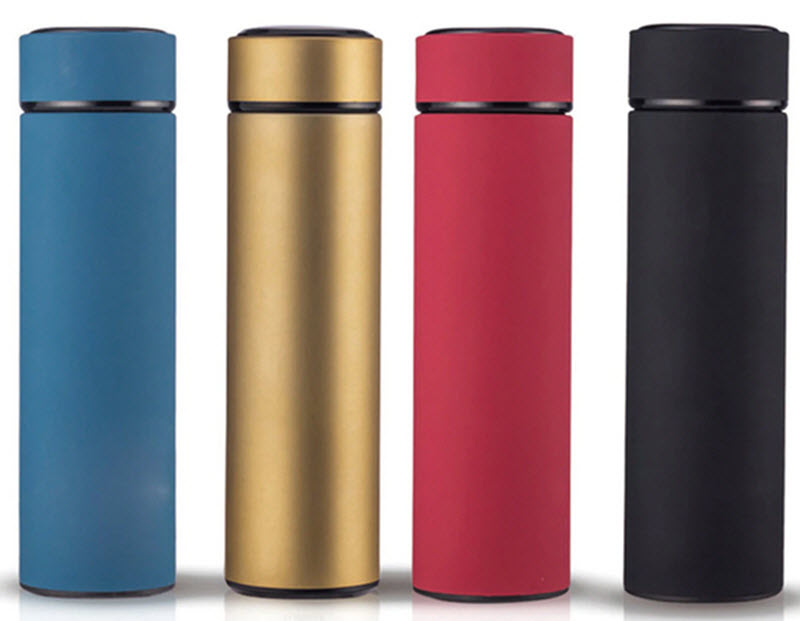In 1892, the Scottish scientist Sir James Dewar invented the insulating vacuum flask while researching cryogenics. He was performing experiments to determine the specific heat of the element palladium and needed to keep the palladium at a stable temperature. To this end, Dewar enclosed a brass chamber in another chamber and evacuated the air between the chambers to create a partial vacuum.
Dewar refused to patent his invention. Today, the vacuum flask is not only a significant tool for many scientific experiments but also a common household item – also known as a thermos. Vacuum flasks are available from a variety of materials, including glass and aluminium.
In some parts of the world, the vacuum flask is known as the Dewar flask or Dewar bottle, in honour of its inventor.

Vacuum flask design
A vacuum flask is a vessel where a vacuum provides insulation. It can be used to keep hot contents warm for longer and to keep cold contents cool for longer than an ordinary storage container.
The basic design of the vacuum flask is to have one flask placed in another, somewhat larger, flask, and join them at the neck. So much of the air is removed from the space between the two flasks that a near-vacuum is formed.
When there is a vacuum (or near-vacuum) instead of air, it is much more difficult for heat to transfer through conduction and convection. Some vacuum-flask designs also reduce heat transfer by thermal radiation by silvering the flask-surfaces facing the gap.
Most of the heat transfer from a vacuum-insulated flask occurs through the neck and opening of the flask, since there is no vacuum there.
Several solutions have been developed to make vacuum flasks even better, such as the vapour-cooled radiation shield and the vapour-cooled neck. Both help reduce evaporation.
What are spacers?
In very long vacuum flasks, it can be impossible to support the inner flask from the neck alone. Therefore, extra support is added in the form of spacers between the interior and exterior. The spacers provide necessary support, but will also act as thermal bridges and this reduces the insulating capacity of the flask.
What are double vacuum flasks?
Double vacuum flasks have two vacuum sections instead of just one. They are for instance found in nuclear magnetic resonance (NMR) machines and magnetic resonance imaging (MRI) machines, where the inner flask contains liquid helium and the outer flask liquid nitrogen, with one vacuum-section between them.
Examples of additional uses
To prevent condensation
Vacuum-insulated containers are not only used to preserve the temperature of the content, they can also be used to decrease condensation.
When cold content is kept in an ordinary container at room temperature, a lot of condensation can form on the outside. Imagine a glass filled with icy cold lemonade on a hot summers day, and how condensation forms on the outside of the glass and drips onto the table. By instead using a vacuum-insulated container to hold the lemonade, condensation can be greatly reduced.
Thermal cooking
A vacuum-insulated cooker, also known as a thermal cooker, is a cooking device capable of retaining heat and cook food without continuously being on heat source (e.g. on a stovetop or connected to an electrical outlet).
Before the advent of vacuum-insulated cookers, the Norwegian cooker (haybox cooker or fireless cooker) was used in a similar fashion. If we go back even further, to Medieval Europe, an earthenware pot was heated up over a fire and then placed in a hole in the ground, insulated with hay, moss, dry leaves, or similar. Just as with the vacuum-insulated cooker, this was a fuel-saving mechanism, as the food inside would be slowly cooked without the need for any more fuel.
History
As mentioned above, the scientist Sir James Dewar invented the vacuum flask in 1892 when he needed to keep palladium at a stable temperature in his lab.
Reinhold Burger and Albert Aschenbrenner
In the early 1900s, the vacuum flask become a popular household product. The two German glass-blowers Reinhold Burger and Albert Aschenbrenner realised that the insulating properties of the vacuum flask could be utilized to keep cold drinks cold and warm drinks warm. To this end, they created a more robust flask design and marketed it for everyday use.
Burger and Aschenbrenner called their product Thermos, and subsequently claimed the commercial rights not only to that trademark but also to the product itself. Dewar later lost a court case against the Thermos company.
Gustav Robert Paalen
The Viennese inventor Gustav Robert Paalen improved and refined the Thermos flask in several notable ways. He designed various types of vacuum-insulated containers suitable for domestic use, which were then distributed (with license agreements) through the Thermos Bottle Companies on different national markets.
Genericization of the trademark
Eventually, other manufacturers began producing their own vacuum-insulated containers for the consumer market. The general population called any type of vacuum-insulated container (especially if it was a flask) a thermos, and the trademark Thermos became genericized in English and several other languages.
Thermos is still upheld as a protected trademark in some countries, but the United States is not one of them (since 1963).
